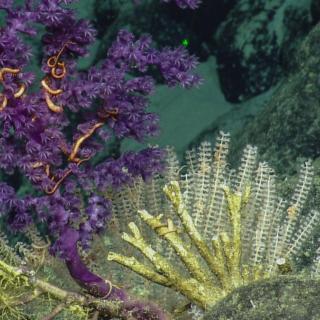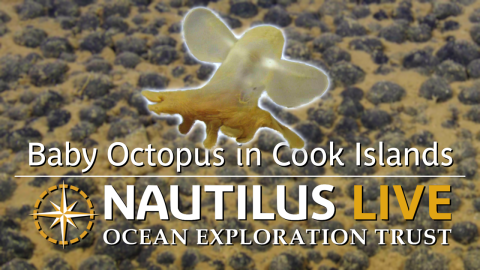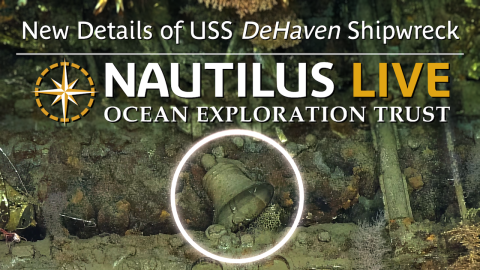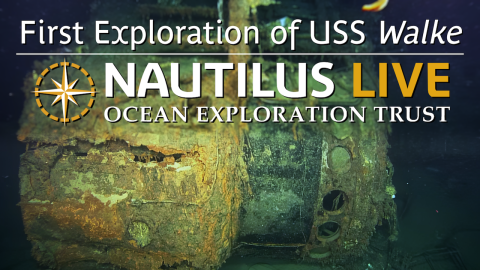Collecting a Fossilized Whale Skull and More Sampling Highlights
The E/V Nautilus and team explore areas of the deep sea that have rarely -- usually never -- been seen by human eyes. Characterizing these places means recording many types of data across an expedition.
Beyond video imagery captured and observational data logged during dives, sampling is another important record of Nautilus’ explorations, creating opportunities to further analyze cryptic species, conduct laboratory studies like rock aging, and learn about the deep sea for decades to come. Throughout this expedition to the Johnston Atoll Unit of the Pacific Remote Islands Marine National Monument (PRIMNM), check out some of the different types of samples gathered to better understand the deep water diversity and geological history of this protected area including corals, sea cucumbers, sea pens, snake stars, and even a manganese crust-coated beaked whale skull!
Different techniques are needed to carefully collect samples from the seafloor miles beneath the ship, the tool used varies based on the type, size, and fragility of the specimen. The standard collection method for sturdy samples like corals or rocks is a “grab” with the Kraft or Magnum ISE manipulator arms on ROV Hercules. Different jaws for different purposes can be installed; these collections use the coral cutter jaws which can snip off small segments of a colony. For small, delicate, or flexible specimens, the “slurp” an underwater vacuum system complete with hose and rotating chambers gathers things difficult to pinch or lift with the jaws. The scoop was a DIY creation of the ROV workshop combining PVC piping and a mesh bag to gather small rocks and polymetallic nodules for closer study on the ship. Niskin bottles on the port side of Hercules capture water samples at depth for analysis of their chemical composition and the environmental DNA they contain. Additionally, cylindrical push cores collect layered sediment to study tiny creatures and conditions below the sediment surface.
Learn more about what happens with samples after an expedition. And learn more about this expedition funded by NOAA Ocean Exploration via the Ocean Exploration Cooperative Institute.

Deep Sea Biodiversity & Ancient Volcanoes near Johnston Atoll
Johnston Atoll, one of the most isolated atolls in the world, is located in the central Pacific Ocean, between the Hawaiian Islands, the Line Islands, and the nation of Kiribati. Around this atoll, the Pacific Remote Island Marine National Monument (PRIMNM) was expanded in 2014 to protect the full 200 nautical mile perimeter of the exclusive economic zone (EEZ) encompassing many unexplored seafloor features.



